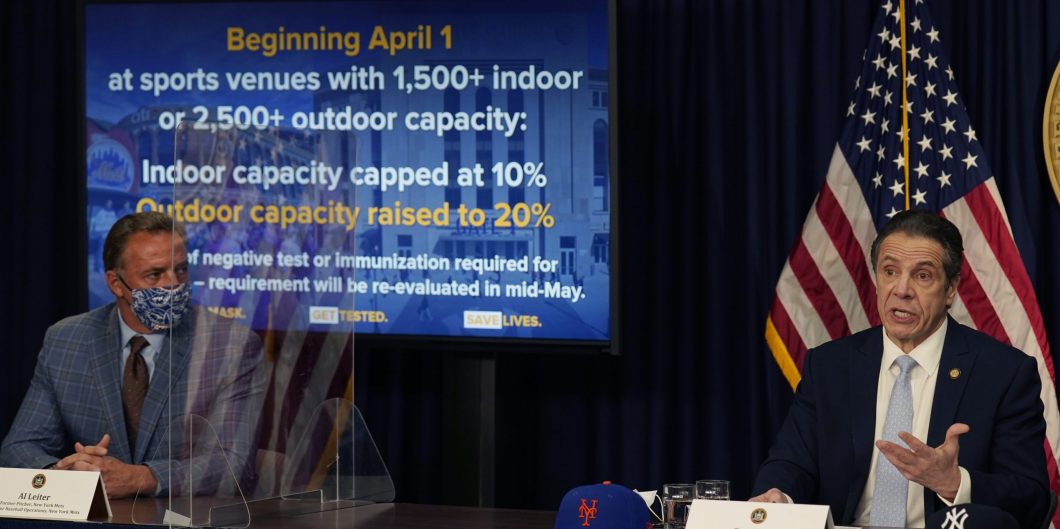There is little doubt that there are many who will want to use the epidemic as a pretext for exerting more power and control over the population.
Shutdowns Offered Only Costs, No Benefits
Americans in states with Democratic governors might have paid a steep economic cost for those governors’ more aggressive anti-COVID policies relative to the more cautious responses of (most) Republican governors. And despite their costliness, preliminary evidence suggests the more aggressive policies in Democratic states did not result in any greater reduction in COVID mortalities for those states.
From December 2019 to December 2020—the year of the pandemic and state policy responses to the pandemic—unemployment rates increased in U.S. states with Democratic governors by an average of 3.15 percent. Unemployment rates in U.S. states with Republican governors increased by an average of 1.65 percent, or at a rate 1.5 percent lower than in states with Democratic governors. Depending how one calculates the comparison across Democratic and Republican states, this difference translates into the unemployment of an additional 924,000 to 1.3 million Americans in Democratic states than if Democratic states shared the unemployment experience of Republican states. Despite the higher level of unemployment in Democratic states, after about a year of COVID, deaths per million of population from COVID are roughly the same in Democratic states as they are in Republican states. If correct, the heightened economic costs paid by citizens in Democratic states for their governors’ more aggressive anti-COVID policies came with no net health benefits produced by those costlier policies.
The evidence is rudimentary, to be sure. My comparisons come from employing a simple comparison of means (or averages) of the change in unemployment during the pandemic year between states with Democratic governors and states with Republican governors. For the change in unemployment rates, I took seasonally adjusted data for the 50 states reported by the U.S. Bureau of Labor Statistics (Table 1) for December 2019 and for December 2020 (hat tip to Todd Kent on the state-level BLS data). I then subtracted the respective state unemployment rates to get the change in unemployment rates over the year. I separated the data by partisanship of the states’ governors during 2020. I then computed the average change in unemployment rates separately for states with Democratic governors and for states with Republican governors. States with Democratic governors saw their unemployment rates increase by 1.5 percent more than unemployment increased in states with Republican governors during 2020. Treating the data from Democratic and Republican states as samples, I ran a statistical test (a “comparison of means” test) to determine whether the difference in the average change of unemployment in the two sets of states is statistically significant—and it is.
Because Republican states average smaller populations than Democratic states, translating these different changes in state unemployment rates into a numerical estimate of excess unemployment in Democratic states relative to Republican states isn’t straight forward. On the one hand, if we simply compare the different averages across the different types of states—that is, treating each state as a separate unit of analysis irrespective of the states’ differing populations—and then ask how many more people would have been employed in Democratic states if Democratic states had the same average change in unemployment rate as Republican states, then there would have been around an additional 1.3 million people employed in Democratic states if those states shared the same unemployment experience as Republican states.
While it might be justifiable to think of state-level policy in this way, doing so does exaggerate the impact of smaller Republican states on the difference in unemployment rates. An alternative way of getting at the difference without this exaggerating effect is to lump all Republican state populations together as if people in Republican states all lived in one aggregated Republican unit and to lump Democratic state populations together in a single, separate Democratic unit. In that case, unemployment increased in the population of this aggregate Democratic unit by 1.06 percent more than in the aggregate of Republican states. In that case, Democratic states would have seen around 924,000 more of their residents employed if they had experienced the lower increase in unemployment that the aggregated Republican state population experienced.
Looking at absolute numbers rather than relative changes, in December 2019, the aggregated unemployment rate in states with Democratic governors was only slightly higher than aggregated unemployment rate in states with Republican governors—3.76 percent in Democratic states versus 3.34 percent in Republican states. One pandemic year later, unemployment rates had increased in Democratic states to 7.35 percent while it increased in Republican states to only 5.87 percent.
While only a rudimentary statistical comparison, given the evidence, it is at least a plausible hypothesis that the different increases in unemployment between Democratic and Republican states in 2020 reflect the impact of different pandemic policies adopted by the different governors in the different states.
Cost without Benefit in Democratic States?
To be sure, just because epidemic policies adopted by Democratic governors might result in higher unemployment (and, possibly, other correlated economic costs as well) for their states does not necessarily mean the more aggressive policies in Democratic states should not have been adopted. If the more aggressive pandemic policies of Democratic governors resulted in significantly lower death rates due to COVID, then the benefits of those policies in the form of lower mortality rates could outweigh the higher unemployment and other economic costs of those policies. The benefits of the more aggressive policies would be worth the costs in that case.
Yet preliminary evidence suggests that, on average, the net benefit of Democratic policies over Republican policies in reducing COVID deaths is zero: There is no difference in COVID fatality rates between Republican and Democratic states, this despite the generally more-vigorous policy responses to the pandemic of Democratic governors and the generally more restrained responses of Republican governors.
Too often the media compare just two states. Comparisons of California with Florida have been particularly popular recently. Looking at the experience of all fifty states, however, eliminates the cherry picking that comparing the experiences of only two states can allow.
To provide a rudimentary comparison of COVID mortality across all the states, I took recent calculations of “deaths per million of population” for all the states from RealClearPolitics’ “Coronavirus Tracker,” and separated the data by whether the state had a Democratic or Republican governor during 2020. (Recently elected governors would not yet have had the opportunity to affect COVID mortality rates in their states.) I then compared the average rates of COVID mortality per million between states with Republican governors and states with Democratic governors. The average number of deaths per million of population were 1,466 in states with Democratic governors and 1,480 in states with Republican governors; this small difference in state averages was not close to being statistically significant.
The point is, given the lack of evidence, cautious approaches that endorsed less costly responses were always at least as reasonable as the more aggressive policy responses to the pandemic.
While early mortality data from COVID last spring showed a greater numbers of fatalities in Democratic states relative to Republican states, I wrote at the time that I didn’t think “Republican governors would have done any better in preparing for the coronavirus pandemic than the Democratic governors have.” The subsequent evidence from last year bears out that assessment. But I added at the time that similar unpreparedness across the states was “not the proper measure.” After all, the mainstream media and most public health authorities pressed for broad, vigorous, and, above all, the economically costliest responses to the virus. Not just low-cost masking, hand washing, and spacing policies for vulnerable populations, but closing “non-essential businesses,” shuttering schools, and imposing stay-at-home requirements across entire state populations. The mainstream media were merciless in criticizing those Republican governors who were more cautious in imposing the most draconian closure and stay-at-home policies in their states.
The more costly policies adopted in (most) Democratic states were supposed to be necessary to respond to the threat of the virus; these policies were supposed to be necessary to reduce death rates dramatically relative to less restrictive measures.
While a simple comparison-of-means test at best provides only rudimentary evidence—gubernatorial partisanship is a coarse proxy for policy, and there are additional variables that a more sophisticated analysis would include—the absence of any statistically significant difference in mortality rates between Republican- and Democratically-led states does present a prima facie challenge to the popular narrative that broad, draconian policy responses were essential to address the pandemic.
The preliminary evidence reported here at least suggests the alternative possibility that the heightened economic costs of more-draconian COVID policy responses in Democratic states were offset by no decrease in COVID deaths. If correct, the more aggressive closure and stay-at-home policies merely imposed additional costs on the people in those states without conferring any additional benefits on them in compensation for those costs.
What Policies Did Radical Uncertainty Support?
From the very beginning of the pandemic, public health authorities emphasized what we didn’t know about the developing pandemic. That was entirely appropriate. Yet more often as not, those same authorities suggested that this deep ignorance endorsed minimaxing policy strategies that counseled adoption of draconian closure and stay-at-home policies in addition to more modest policies that would focus on protecting identifiably discrete vulnerable populations and on far less costly masking, hand washing, and distancing policies.
Yet radical uncertainty is radical uncertainty for the public health expert as well as for others; and for Democrats as well as for Republicans. Facing a threat in which one does not know enough even to provide probabilistic estimates does not imply that any policy response is reasonable no matter its cost. Yet the mainstream media and many public health experts seemed to endorse the costliest of policy responses based on radical uncertainty regarding how the pandemic would evolve. As a result, they endorsed the strictest policies, policies in which potential benefits were unknown and uncertain, and did so fully aware of the certain costs to their citizens’ livelihoods and quality of life.
Further, given that the impact of the most draconian policy responses to the pandemic had predictable and outsized effects on the poorer, least affluent Americans, even a liberal/Rawlsian approach to policy—one that endorses policies only if the lot of the least affluent citizens is improved by the policy—could reasonably counsel caution in making policy rather than wildly groping around in the dark. Yet any suggestion of caution in policy responses last year in response to the developing pandemic was usually met with a chorus of denunciation.
There are other costs that of course could, and should, be weighed in the balance beyond unemployment. There are economic losses that are likely correlated with unemployment: underemployment, income losses and increased poverty, decreased savings, and more. All of these can also impact health, both directly through lower household resources but also indirectly through the increased stress that economic uncertainty and reduced life prospects can cause. Further, there is preliminary evidence that an outsized fear of COVID relative to other less novel health threats resulted in people delaying needed medical care that they should still have pursued during the pandemic. An overemphasis on the COVID threat by policy-makers and health authorities may itself have resulted in “excess deaths.”
The point isn’t that, given what they knew at the time, Republican governors were certainly right while Democratic governors certainly wrong in the policies they adopted last year. Indeed, some Republican governors endorsed aggressive policy responses and some Democratic governors were more modest in their policy responses. (That may account for why unemployment rates increased in Republican as well as Democratic states, even as unemployment increased more dramatically in Democratic states.) The point is, given the lack of evidence, cautious approaches that endorsed less costly responses were always at least as reasonable as the more aggressive policy responses to the pandemic. One concrete step toward a less polarized political environment would be to recognize that that has been the case throughout the entire pandemic.



